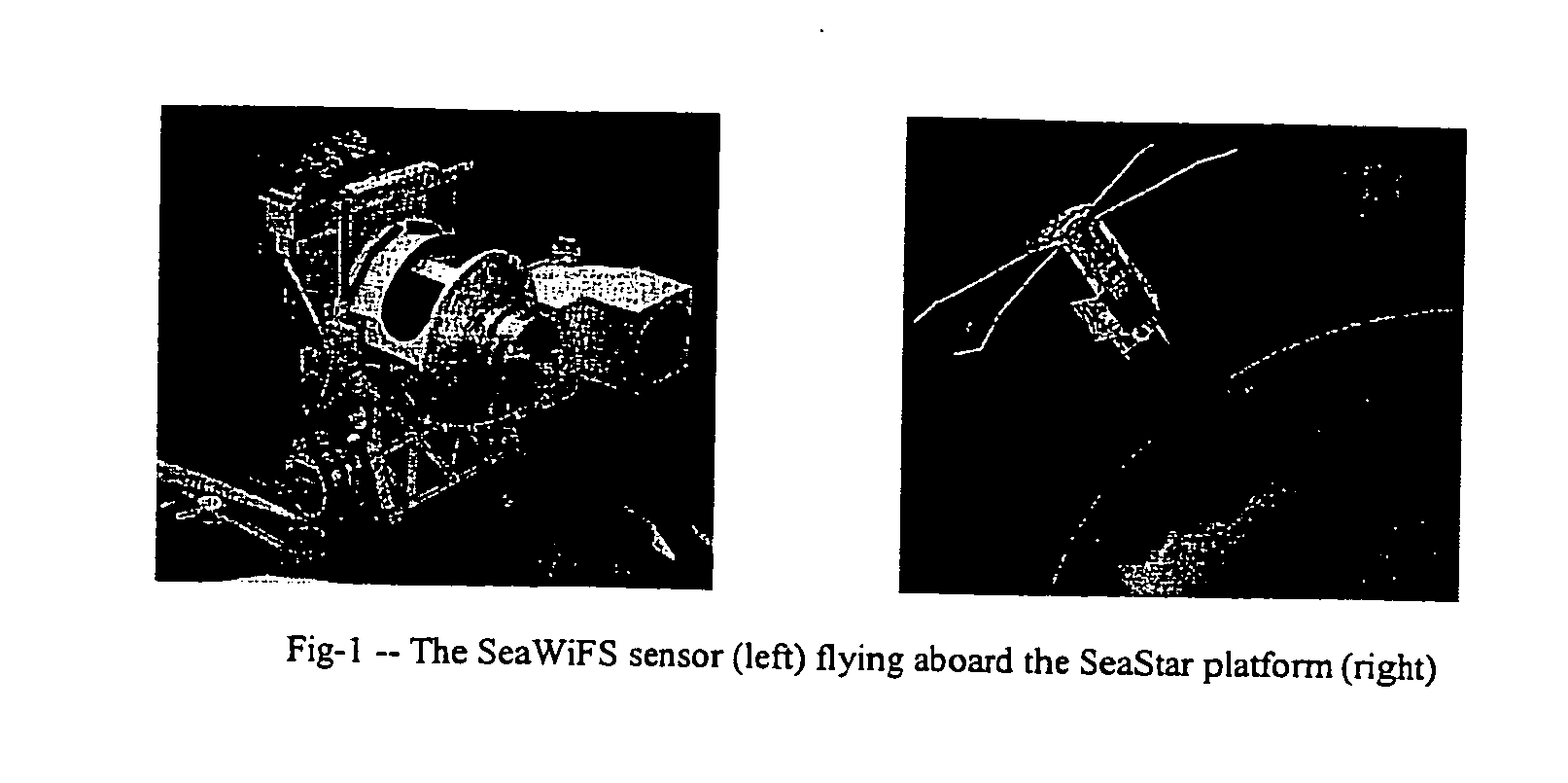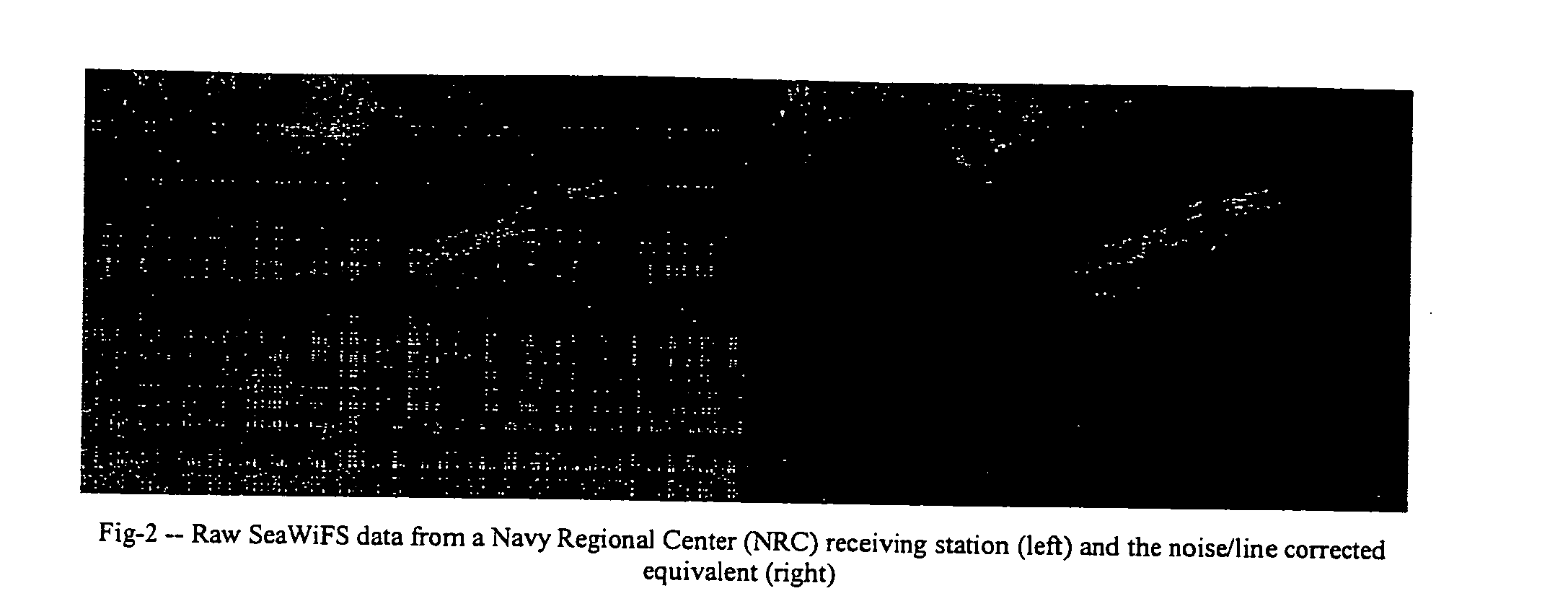System and method for significant dust detection and enhancement of dust images over land and ocean
a technology of significant dust and enhancement, applied in the field of significant dust detection and enhancement of dust images over land and ocean, can solve the problem that the simple ocean component described above is insufficient for identifying dust over land
- Summary
- Abstract
- Description
- Claims
- Application Information
AI Technical Summary
Benefits of technology
Problems solved by technology
Method used
Image
Examples
Embodiment Construction
The Satellite Meteorological Applications Section at the Naval Research Laboratory (NRL) in Monterey has developed true color, vegetation enhancement, and airborne sand / dust enhancement processing capabilities for the Sea-viewing Wide Field of View Sensor (SeaWiFS) instrument. These products are made in near real time (typically 60 to 90 minute latency from time of ingest at the receiving stations) using telemetries captured at Navy Regional Centers (NRCs) located in Spain (Rota), Bahrain, and Japan (Yokosuka), and populate a password-protected website for several predefined sectors within the general coverage regions of these centers. Presented here is an overview of the SeaWiFS sensor and its capabilities / limitations, a summary of the procedure, and the current processing architecture. Examples drawn from the archived database (automated processing of these data commenced Aug. 8, 2001) are presented to illustrate their quality and potential operational utility.
Platform / Instrume...
PUM
 Login to View More
Login to View More Abstract
Description
Claims
Application Information
 Login to View More
Login to View More - R&D
- Intellectual Property
- Life Sciences
- Materials
- Tech Scout
- Unparalleled Data Quality
- Higher Quality Content
- 60% Fewer Hallucinations
Browse by: Latest US Patents, China's latest patents, Technical Efficacy Thesaurus, Application Domain, Technology Topic, Popular Technical Reports.
© 2025 PatSnap. All rights reserved.Legal|Privacy policy|Modern Slavery Act Transparency Statement|Sitemap|About US| Contact US: help@patsnap.com



